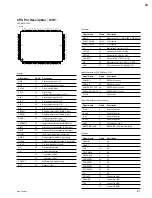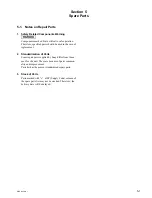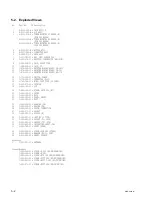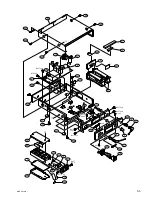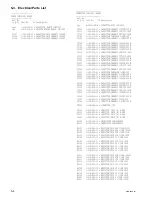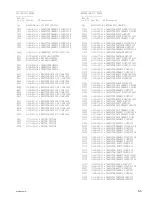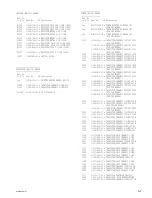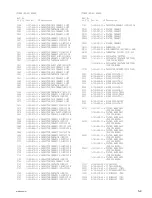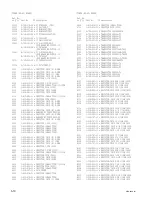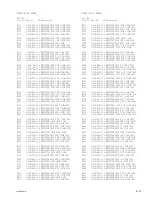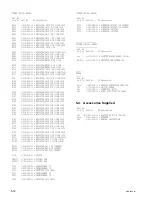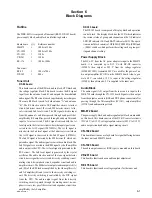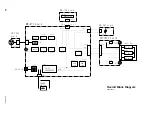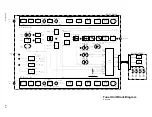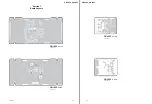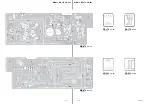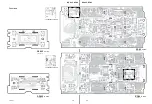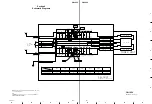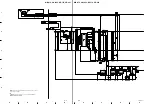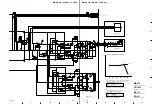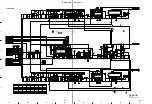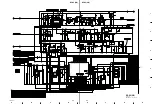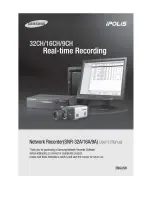
6-1
WRR-802A (U)
Outline
The WRR-802A is composed of tuner unit (RF-92, DP-305 board),
power supply block, audio block, and following boards.
Board name
Q’ty
Reference number
MB-872
1
1000s to 1300s
CN-1922
1
2000s to 2300s
CN-1923
1
1100s
VR-261
1
1200s
RE-176
1
1000s, 1200s
Tuner unit
RF-92
1
100s to 700s
DP-305
1
800s
Tuner Unit
.
RF-92 board
This board consists of the RF block, audio block, CPU block and
the voltage regulator block. This board receives the RF signal
input from the antenna A and B and outputs the demodulated
audio signal. The RF circuit is used superheterodyne techniques.
The same RF block is used for both antenna “A” and antenna
“B”. The RF block consists of RF amplifier circuit, 1st mixer
circuit, 2nd mixer circuit, IF circuit, FM detector circuit, 1st lo-
cal circuit and 2nd local circuit. The RF signal which is input
from the antenna A and B are passed through band pass filter,
amplified by RF amplifier, passed through band pass filter and
input to 1st mixer circuit. The RF signal is mixed with the 1st
local signal in the 1st mixer circuit where the input signal is con-
verted to the 1st IF signal (150.75MHz). The 1st IF signal is
mixed with the 2nd local signal at the 2nd mixer circuit where
the 1st IF signal is converted to the 2nd IF signal (10.7MHz).
The 2nd IF signal is detected by the FM detector IC which out-
puts audio signal. The audio signal is sent to the audio block. The
2nd IF signal is converted to the RSSI signal by the IF amplifier
and is output to the CPU. The 1st local signal is generated by the
PLL circuit. The 2nd local signal is generated by the crystal
oscillator. The audio block consists of the tone signal detector
circuit, noise signal detector circuit, diversity switching circuit,
muting circuit, de-emphasis circuit, expander circuit and audio
amplifier circuit. The FM detector outputs (audio outputs AF(A)
and (B)) of the RF block are amplified by the AF amplifier (A)
and AF amplifier (B) and is sent to the diversity switching cir-
cuit. The diversity switching is controlled by the DIV signal
from the CPU. The audio output signal from the diversity
switching circuit is passed through the muting circuit, de-em-
phasis circuit, low pass filter circuit and expander circuit then
amplified by the AF amplifier.
Section 6
Block Diagrams
.
DP-305 board
The DP-305 board is composed of display block and operation
control block. The display block has the LCD which indicates
the various status of group and channels and the AF indicator
LED, RF indicator LED and BATT indicator LED. The opera-
tion control block consists of GP(S801),CH(S802),
+
(S803),and
_
(S804) switches which perform the setting such as group set-
ting and channel setting.
Power Supply Block
The DC
+
9 V from the AC power adapter is input to the MB-872
board, it is converted up to
±
15 V with DC-DC converter
(IC1001), then output as
±
12 V from the voltage regulator
(IC1004/IC1005). Generated
±
12 V are used for the power of au-
dio output amplifier (IC1101) on the MB-872 board. Also, to gen-
erate
+
9 V, converted
+
15 V is input to the voltage regulator
(IC1006), then obtained
+
9 V is supplied to the tuner unit.
Audio Block
The audio signal (AF) output from the tuner unit is input to the
MB-872 board through the CN-1922 board. Signals is then output
from the output connectors (XLR and TRS phone connectors) after
passing through the filter amplifier (IC1101), output amplifier
(IC1101) and audio muting circuit.
MB-872 board
The power supply block and audio signal output block are mounted
on this board. This board consists of the DC-DC converter circuits
(DC
+
9 V to
±
15 V), voltage regulator circuits (
±
15 V to
±
12 V),
audio output circuit and audio signal muting circuit.
CN-1922 board
This board functions as a relay board for signal buffering between
the tuner unit and MB-872 board.
CN-1923 board
The audio output connector (XLR type) is mounted on this board.
VR-261 board
This board is functioned as an audio output adjustment.
RE-176 board
This board is functioned as voltage regulator for the tuner unit.

